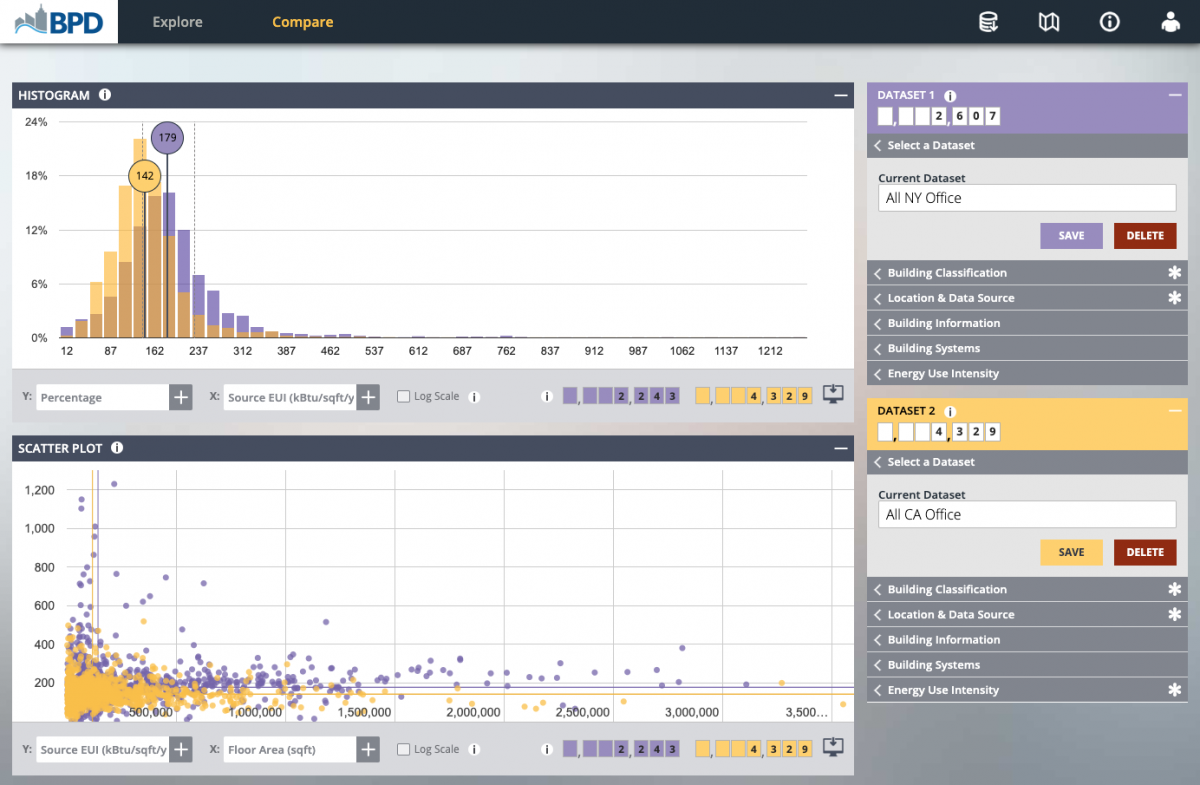Building Performance Database
Building Performance Database
The largest publicly available collection of measured energy performance data for buildings in the United States.

The Building Performance Database (BPD) is the largest publicly-available source of measured energy performance data for buildings in the United States. It contains information about the building’s energy use, location, and physical and operational characteristics. The BPD can be used by building owners, operators, architects and engineers to compare a building’s energy performance against customized peer groups, identify energy performance opportunities, and set energy performance. It can also be used by energy performance program implementers to analyze energy performance features and trends in the building stock. The BPD compiles data from various data sources, converts it into a standard format, cleanses and quality checks the data, and provides users with access to the data in a way that maintains anonymity for data providers.
The BPD consists of the database itself, a graphical user interface allowing exploration of the data, and an application programming interface allowing the development of third-party applications using the data.
